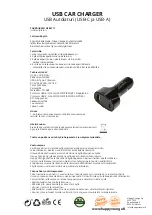
119
De-preservation
1. Remove the preservative lubricant from the parts by washing
them with kerosene or clear gasoline. Remove lubricant from
areas, which may come in contact with rubber parts or painted
surfaces. Thoroughly wash the spark plugs in clear gasoline.
2. Carry out daily maintenance of the vehicle.
3. Check the oil level in the engine housing. Drain any
excessive oil.
4. Before starting the engine, lubricate each cylinder with 30-
50 g of engine oil and turn the crankshaft by 10-15 revolutions.
Chapter 12. TrAnSPorTATIon
Vehicles can be transported by railway, water or air transport.
When transporting the vehicles by water or air transport,
fasten them in accordance with the ship scheme or air transport
scheme. Use appliances, which would not damage the parts and
the paint of the vehicle.
The loading and unloading of the vehicles should be carried
out by a crane with special grips.
On all transports, the vehicles should be located so that the
distance between the vehicles (extreme points) on the engine
cooling radiator side would equal to 50-100 mm, and on the
other sides not less than 100 mm. When transporting, the parking
brake should be on, the engine shut down, the gearbox lever
should be in the position of the first gear, and the battery should
be switched off (wire disconnected from the negative terminal).
Before transporting by air, the fuel tanks should be filled with
fuel to not more than 75 % of their capacity.
The vehicle should be driven into an airplane with the first
gear of the gearbox and with the lower range of the transfer case
or in reverse.
Chapter 13. SCrAPPInG
The vehicle is scrapped in accordance with local regulations,
rules and methods.
Содержание HUNTER 315195
Страница 6: ...6 Fig 1 3 Location of the engine identification number...
Страница 132: ...For Notes...
Страница 133: ...For Notes...
Страница 134: ...For Notes...
Страница 135: ...For Notes...
















































